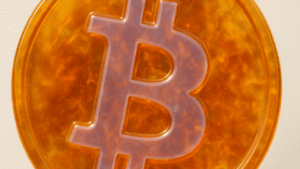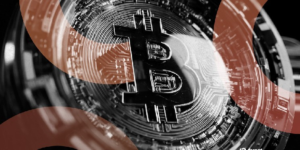On-chain governance is a decentralized framework used for organizing and integrating updates/improvements to the blockchain networks.
What Is On-Chain Governance?
On-chain governance gives users the ability to vote directly to change the underlying protocol in blockchain governance. The duty of controlling protocol updates, upgrades, and bug fixes is delegated to the community rather than a centralized party.
The two types of decisions that make up blockchain governance are: 1) the rules underlying the protocol, which is the code, 2) and the network’s incentive system, which is the economics.
Blockchain governance can be difficult because it is a decentralized system. On-chain governance is especially useful in distributed cloud-based architectures, where agility is necessary to ensure proper resource allocation. For instance, DFINITY networks provide an on-chain governance approach that is coupled with a proprietary AI system to efficiently assign computing power to various companies and applications connected to their cloud architecture.
Tezos and Decred, for example, are platforms that allow users to vote directly on the platform’s future direction and adjust specific parts to satisfy the needs of both developers and users.
Whereas cryptocurrencies like Bitcoin, employ a far more moderate and off-chain method, which has proven to be smart thus far but lacks the flexibility that businesses want.
The on-chain governance has also helped with the rise of decentralized autonomous organizations (DAOs). DAO is a community-run platform wherein the rules enforced are agreed upon by users. DAOs can become crucial apps for organizations with on-chain governance, allowing customers to interact with their product and customize it to their needs quickly, with no overhead expenses from the entity that launches the application.
On-chain governance works on three mechanisms:
Consensus
Voting is done directly via the protocol in the case of on-chain governance. The consensus technique is equal to a direct democratic voting mechanism where decisions are made directly on the distributed ledger protocol and blockchain improvements are implemented.
Incentive
To level the playing field for all players, there is a shift in control from miners to developers, and subsequently to users.
Users and developers, for example, can advocate for modifications that would substantially reduce transaction costs, putting miners at a disadvantage and making the network unsustainable economically. Similarly, miners can advocate for upgrades that would dramatically increase block rewards, potentially harming the network in the long term.
Information
The on-chain calls for transparency of information just like off-chain governance. The following are the key advantages of on-chain governance:
-
The decision-making approach is effective and decentralized because it is not influenced by a single person rather it is achieved through the community.
-
There is also more transparency because everyone can look at the code and see how consensus is established and decisions are made.
-
Hard forks can also be avoided. When some stakeholders feel alienated from the decision-making process and are unable to reach an agreement with other organizations on the network’s future path, hard forks might occur.
Additionally, on-chain governance is performed by voting through tokens, and incentives for engaging in the voting process are offered to encourage user participation.



